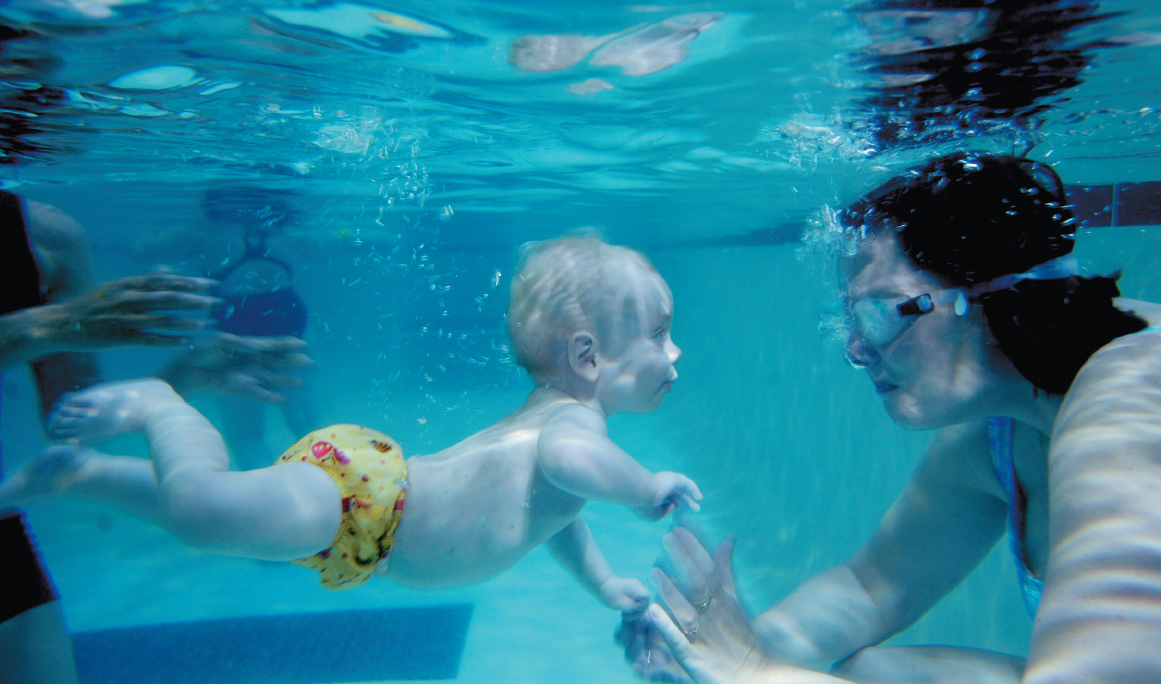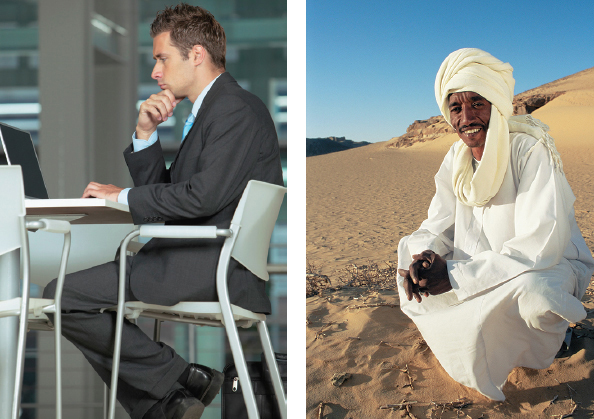7.3.1 Communicating Through Body Movements
Printed Page 218
Communicating Through Body Movements
She’s one of the most memorable movie villains in years, and the most loyal of Lord Voldemort’s “Death Eaters.” Across the various Harry Potter films in which she has appeared, Bellatrix Lestrange (played by Helena Bonham Carter) is almost always a flurry of motion. Her facial expression is soft and mocking one moment, hard and vicious the next. Her eyes are constantly watchful, and she stares intensely with hostility at any who oppose her. Her gestures are large and vivid, even as her body shifts quickly from one posture to the next, rarely remaining still. All of these movements combine to accentuate the anger, loathsomeness, and evil associated with her character.
As depicted in the movies, Bellatrix exemplifies the power of kinesics (from the Greek kinesis, meaning “movement”)—visible body movements. Kinesics is the richest nonverbal code in terms of its power to communicate meaning, and it includes most of the behaviors we associate with nonverbal communication: facial expression, eye contact, gestures, and body postures.

Facial Expression “A person’s character is clearly written on the face.” As this traditional Chinese saying suggests, the face plays a pivotal role in shaping our perception of others. In fact, some scholars argue that facial cues rank first among all forms of communication in their influence on our interpersonal impressions (Knapp & Hall, 2002). We use facial expression to communicate an endless stream of emotions, and we make judgments about what others are feeling by assessing their facial expressions. Our use of emoticons (such as  and
and  ) to communicate attitudes and emotions online testifies to our reliance on this type of kinesics, and the primacy of the face even influences our labeling of interpersonal encounters (“face-to-face”) and Web sites devoted to social networking (“Facebook”).
) to communicate attitudes and emotions online testifies to our reliance on this type of kinesics, and the primacy of the face even influences our labeling of interpersonal encounters (“face-to-face”) and Web sites devoted to social networking (“Facebook”).
Eye Contact Eye contact serves many purposes during interpersonal communication. We use our eyes to express emotions, signal when it’s someone else’s turn to talk, and show others that we’re listening to them. We also demonstrate our interest in a conversation by increasing our eye contact, or signal relationship intimacy by locking eyes with a close friend or romantic partner.

Eye contact can convey hostility as well. One of the most aggressive forms of nonverbal expression is prolonged staring—fixed and unwavering eye contact of several seconds’ duration (typically accompanied by a hostile facial expression)—like that used by Bellatrix in the Harry Potter films. Although in the real world women seldom stare, men use this behavior to threaten others, invite aggression (“staring someone down” to provoke a fight), and assert their status (Burgoon, Buller, & Woodall, 1996).
Gestures Imagine that you’re driving to an appointment and someone is riding right on your bumper. Scowling at the offender in your rearview mirror, you’re tempted to raise your middle finger and show it to the other driver, but you restrain yourself. The raised finger is an example of a gesture, a hand motion used to communicate messages (Streek, 1993). “Flipping” someone “the bird” falls into a category of gestures known as emblems, which represent specific verbal meanings (Ekman, 1976). With emblems, the gesture and its verbal meaning are interchangeable. You can say the words or use the gesture, and you’ll send the same message.
Unlike emblems, illustrators accent or illustrate verbal messages. You tell your spouse about a rough road you recently biked, and as you describe the bumpy road you bounce your hand up and down to illustrate the ride.
Regulators control the exchange of conversational turns during interpersonal encounters (Rosenfeld, 1987). Listeners use regulators to tell speakers to keep talking, repeat something, hurry up, or let another person talk (Ekman & Friesen, 1969). Speakers use them to tell listeners to pay attention or to wait longer for their turn. Common examples include pointing a finger while trying to interrupt and holding a palm straight up to keep a person from interrupting. During online communication, abbreviations such as BRB (“be right back”) and JAS (“just a second”) serve as textual substitutes for gestural regulators.
Regulators
Watch this clip to answer the questions below.

Question
Want to see more? Check out the Related Content section for additional clips on channel and linear communication model.
Adaptors are touching gestures that serve a psychological or physical purpose (Ekman & Friesen, 1969). For example, you smooth your hair to make a better impression while meeting a potential new romantic partner.
Posture The fourth kinesic is your bodily posture, which includes straightness of back (erect or slouched), body lean (forward, backward, or vertical), straightness of shoulders (firm and broad or slumped), and head position (tilted or straight up). Your posture communicates two primary messages to others: immediacy and power (Mehrabian, 1972). Immediacy is the degree to which you find someone interesting and attractive. Want to nonverbally communicate that you like someone? Lean forward, keep your back straight and your arms open, and hold your head up and facing toward the person when talking. Want to convey dislike? Lean back, close your arms, and look away.

Power is the ability to influence or control other people or events (discussed in detail in Chapter 8). Imagine attending two job interviews in the same afternoon. The first interviewer sits upright, with a tense, rigid body posture. The second interviewer leans back in his chair, with his feet up on his desk and his hands behind his head. Which interviewer has more power? Most Americans would say the second. In the United States, high-status communicators typically use relaxed postures (Burgoon et al., 1996), but in Japan, the opposite is true. Japanese display power through erect posture and feet planted firmly on the floor.
Communicating Immediacy
- Using kinesics to communicate immediacy during interpersonal encounters
-
 Initiate an encounter with someone whom you want to impress as an attentive and involved communicator (such as a new friend or a potential romantic partner).
Initiate an encounter with someone whom you want to impress as an attentive and involved communicator (such as a new friend or a potential romantic partner). -
 While talking, keep your facial expression pleasant. Don’t be afraid to smile!
While talking, keep your facial expression pleasant. Don’t be afraid to smile! -
 Make eye contact, especially while listening, but avoid prolonged staring.
Make eye contact, especially while listening, but avoid prolonged staring. -
 Directly face the person, keep your back straight, lean forward, and keep your arms open and relaxed (rather than crossing them over your chest).
Directly face the person, keep your back straight, lean forward, and keep your arms open and relaxed (rather than crossing them over your chest). -
 Use illustrators to enhance important descriptions, and regulators to control your exchange of turns.
Use illustrators to enhance important descriptions, and regulators to control your exchange of turns.